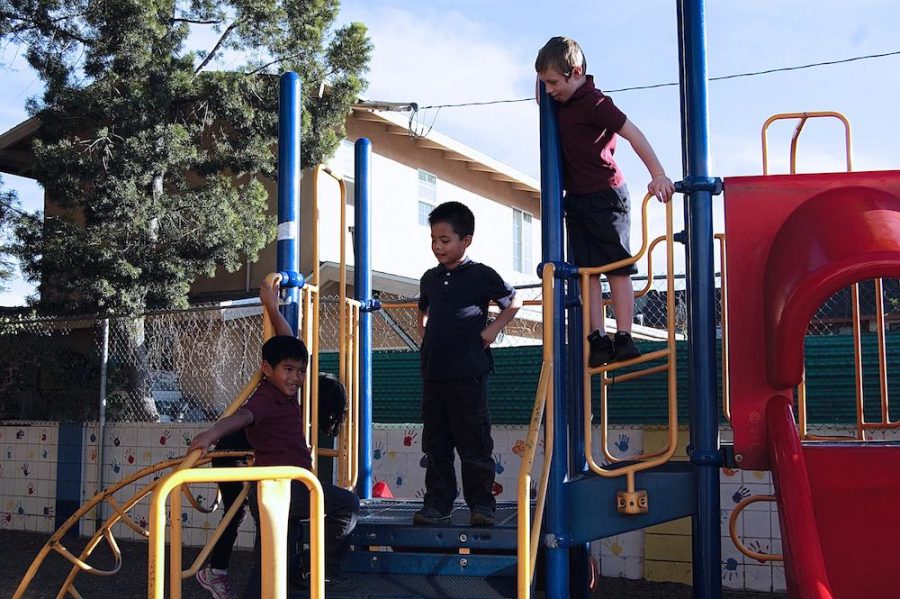(Dec. 20, 2011) — ‘Suicide Bridge’ in Pasadena played host to the death of 25-year-old Rashad Varma, a former Clark student on Oct. 30. Varma took his life that day and left behind family and friends who mourn his loss. “When he was happy, he was really happy; when he was sad, it consumed him,” said his high school friend and fellow Clark alumnus Lauren Tharp in an email interview. “He struggled with his dark days, but did not believe in medication or even therapy.” Varma pursued stand-up comedy, but according to Tharp, that was just one of the many stakes he made in his efforts to earn himself time in the limelight. When he wasn’t concerned with this, he was concerned with trying to make others happy. “He was an extremely sensitive young man. He was like Atlas — but instead of carrying the world, he tried to carry the weight of the world’s problems,” said Tharp. “He cared about you. Yes, YOU! Even if he didn’t know you, he cared about you. Even more than he cared for himself.” Varma was in the age group that is particularly high-risk for committing suicide. A person in their early twenties may have one of two outlooks on life, generally speaking. Either he or she will embrace the many possibilities yet unfolded, or feel as though — now entering the real adult world — things will only get harder and happiness will be that much harder to cling to. If the latter occurs, often times it does not take much to trigger a person to commit suicide. In a recent column by Los Angeles Times journalist Sandy Banks, a woman spoke of her son’s suicide from just months ago. Ester Ybarra Bryant’s 13-year-old son asphyxiated himself three years after his father died. The warning signs had not gone far beyond his grades dropping slightly and him being less energetic at home. According to the National Alliance on Mental Illness, about 90% of people from all age, gender and race groups who commit suicide have some type of mental or substance abuse disorder. Family history, age, race and gender are also factors in the likelihood of a person having thoughts of suicide. According to the National Institute of Mental Health, suicide is most common in the white male and almost five times more common in males than in females in the adolescent age group. Among adolescents as a whole, it is the third leading cause of death. According to a Dec. 10 article in Glendale News-Press , a Glendale High student, whose name was not released, threatened to jump from an on-campus bridge on Dec. 8. Her classmates stopped her before she was able to jump. A similar incident occurred at the school in 2008 when a girl stood out on a third-story ledge, crying and gripping the wall but saying that she wanted to jump. She was pulled away by Officer Alex Krikorian and the school’s security director. With the number of suicide attempts for people of all ages so high, it’s clear that people who have bipolar depression, bipolar disorder, manic depression and a host of other mental illnesses, fall victim not as much to their own lack of will to live but to the unbearable grip the disease has on them. That being said, people may still judge those who have made suicide attempts, the families of those who have taken their lives, and the idea of someone ending his or her life as a whole. They may find it insulting — when they consider that people who have illnesses such as cancer fight for their lives — that someone should simply choose to end his. The truth is that people with mental illnesses fight for their lives on a daily basis. They fight not to succumb to, for instance, the depression, decreased sense of judgement and ability to concentrate and mood swings that bipolar depression causes. Medication usually is the only answer to alleviate the pain, but for those who go off it once their symptoms lessen in intensity–a decision prompted by the unpleasant lethargy it often causes them to feel–the consequences may be dire. Whatever the reason for a person’s suicidal thoughts or actions, some teens’ battles with suicide end much more positively. In 2008, a Hoover High student named Lauren Arana saved the life of her friend who texted her saying that she was going to kill herself and had already taken antifreeze. The fact that she lived in Nebraska did not stop Arana from thinking quickly and making the calls that were the difference between life and death for her friend. Tharp believes it’s important to acknowledge Varma’s final act, his final mark upon this world and his loved ones, for what it was and not gloss it over for whatever reason. “I realize it’s a difficult issue to deal with — especially for the loved ones he left behind — but if we ignore it, then we disrespect him, his memory and what he was trying to tell us,” said Tharp. “Rashad wanted to be famous — for anything,” Tharp said. According to Tharp, that is part of the intent that was behind his decision to take his life in such a public place. Any story with an ending similar to Varma’s tells a tale of potential crippled and finally cut short in its prime. “Our dreams might not always come true right away, but that’s no reason to stop dreaming,” said Tharp. “And, if you need help, it’s never too late to ask for it.” If you or someone you knew is experiencing suicidal feelings, please call the National Suicide Prevention Lifeline at 1-800-273-TALK (8255) or visit the American Foundation for Suicide Prevention, www.afsp.org.
Categories:
Clark alum commits suicide
December 20, 2011
More to Discover








